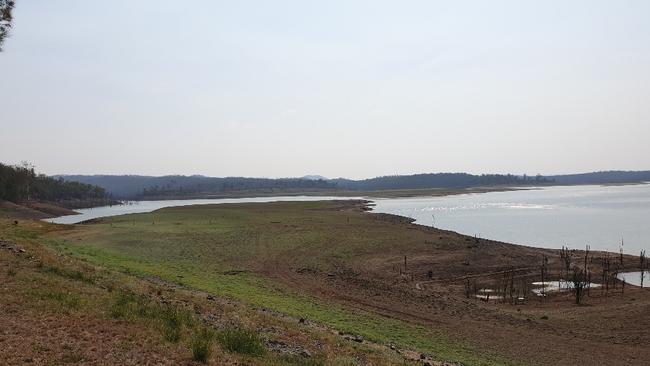Scrapping defective Paradise Dam a live option
Decommissioning Queensland’s Paradise Dam among options being considered as the Palaszczuk government announces inquiry.

A massive reduction in storage capacity or even the decommissioning of Queensland’s defective Paradise Dam are among options being considered in a blow to the surrounding agriculture region.
As the NSW Supreme Court delivered its findings into the negligence of Wivenhoe Dam operators ahead of the 2011 Brisbane floods, the Palaszczuk government bowed to pressure to announce an inquiry into the Paradise Dam, near Bundaberg, which has an “unacceptable risk” of breaking apart during a flood.
READ MORE: Paradise Dam $700m disaster ripples spread | Justice at last for flood victims | 2011 flood victims win class action worth hundreds of millions
After months of refusing to explain a decision to release 105,000ML of water into the ocean in the middle of a drought, it was confirmed on Friday that there are major structural issues in the “rolled concrete” layers of the 52m-tall dam wall.
Documents released with the announcement of the inquiry, to be headed by retired Queensland Supreme Court judge John Byrne, show extensive problems with the bonding of the concrete layers were discovered in 2006, less than a year after the 300,000ML dam was opened. The $200m dam was built under the Beattie government by joint public-private “alliance” vehicle Burnett Water. Its general manager, Graeme Newton, now heads the construction of the $5.4bn Cross River Rail project in Brisbane.
Several major safety reviews of the dam were launched after it suffered damage during 2013 floods, which inundated parts of Bundaberg and led to the emergency airlift of thousands of people. It was discovered that almost the entire 300m concrete sill under the spillway broke away and gouged a 130m-long hole in bedrock, even before the peak of the flood.
On Friday, Natural Resources Minister Anthony Lynham defended his government’s delay in releasing information about the safety issues, including technical reports that “confirmed potential stability issues” with the dam in the event of a repeat of the 2013 flood. “The reports confirm that the dam is safe now,’’ he said in reference to the decision to almost halve the dam’s then stored water levels to 42 per cent in September.
“The dam was constructed in layers of rolled concrete, and the bonding between those layers, that is the issue.’’
The inquiry and the release of several reports follow complaints from the community and an investigation by The Weekend Australian, which revealed design and structural problems and delays by the government and dam operator, SunWater, in taking action. It was also revealed that the dam’s critical “construction report” and a number of technical reports are missing.
Dr Lynham on Friday again refused to respond to reports the government has been told the estimated bill to restore the dam to full capacity is more than $700m.
A SunWater report, released on Friday, casts doubt on the initially scheduled 2025 completion date of repair work and flags various options under consideration that include the return of the dam to its full capacity.
But the other two options are a permanent reduction in the water storage capacity, with the lowering of the spillway by up to 10m, and “decommissioning”. It would be a major blow to the region, the largest farm employer in the state.
Paradise Dam was among Australia’s first “roller compacted concrete” dams, which involves building the structure with layers of compacted, dry concrete separated by a thin membrane. One of the technical reports, released on Friday, shows that core sampling of the dam in 2006 found that there were bonding problems in 78 per cent of areas tested.
“This, in addition to other issues identified with the dam to date … would mean that under enormous pressure … the dam wall could shear, or effectively come apart,” the report states.




To join the conversation, please log in. Don't have an account? Register
Join the conversation, you are commenting as Logout